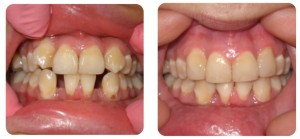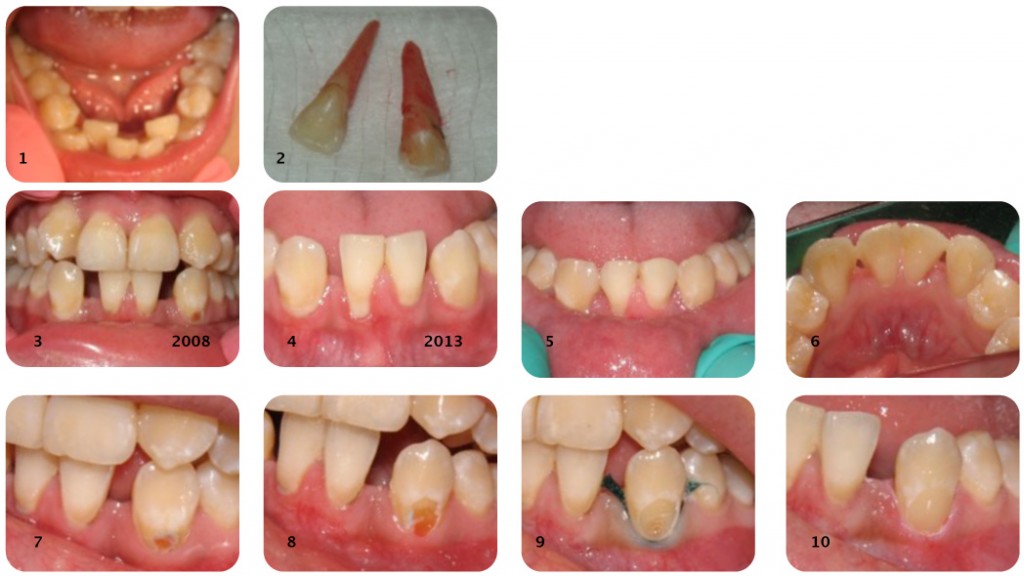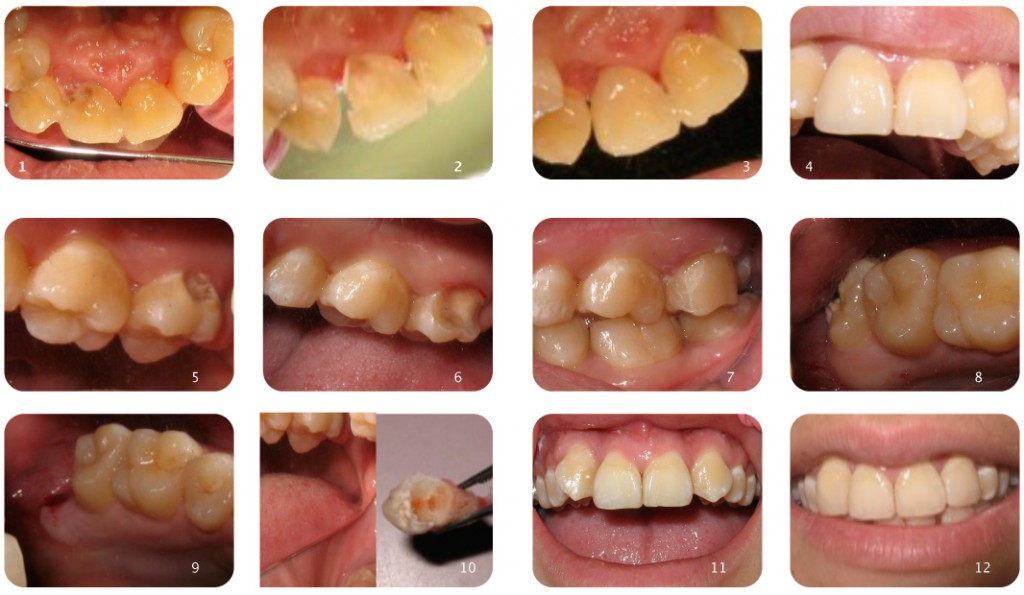When most patients present for therapy they are concerned with two things… fixing what’s wrong and the cost. This presents a dilemma for most dentists who are taught to fix things only the right way. There are creative ways to treat patients that still allow acceptable results. This patient could not afford the time and expense of orthodontics. We treated her by re-contouring teeth, selective extractions and modifying the shape of her teeth with composite materials. The perfect treatment would be orthodontic therapy followed by an aesthetic re-evaluation. Porcelain crowns or veneers would enhance her appearance. However, there is nothing wrong with a “natural “ smile and the desire of many patients to look for a “Hollywood smile” is not a necessity.
Photo number one shows mal-positioned lateral incisors. Photo number two shows the extracted teeth. Photos number three and four shows natural slight closure of the spaces over a period of 5 plus years. Photos five and six show closure utilizing composite material.
Photos seven, eight nine and ten show excavation of cervical decay, utilization of gingival retraction cord and placement of a composite restoration.
Comprehensive dental therapy involves starting with a treatment plan and then prioritizing procedures. Photos one through four show excavation of decay and placement of a composite restoration. Photos five, six and seven demonstrate excavation of deep decay and placement of a composite restoration. Photos eight and nine show extraction of a wisdom tooth. Photo number ten shows removal of decay from this wisdom tooth and how decay may enter the pulp chamber. Root canal therapy would be necessary if this were a tooth that was not indicated for extraction. Photos eleven and twelve show the result of re-contouring teeth in order to establish a more pleasing appearance. When re-contouring the right cuspid it was necessary to proceed in stages a little at a time. This allowed for the buildup of secondary dentin which is the body’s defense mechanism in terms of maintaining vitality of the nerve tissue. Proceeding without this delay would cause irreversible nerve damage and the necessity of endodontic therapy.




